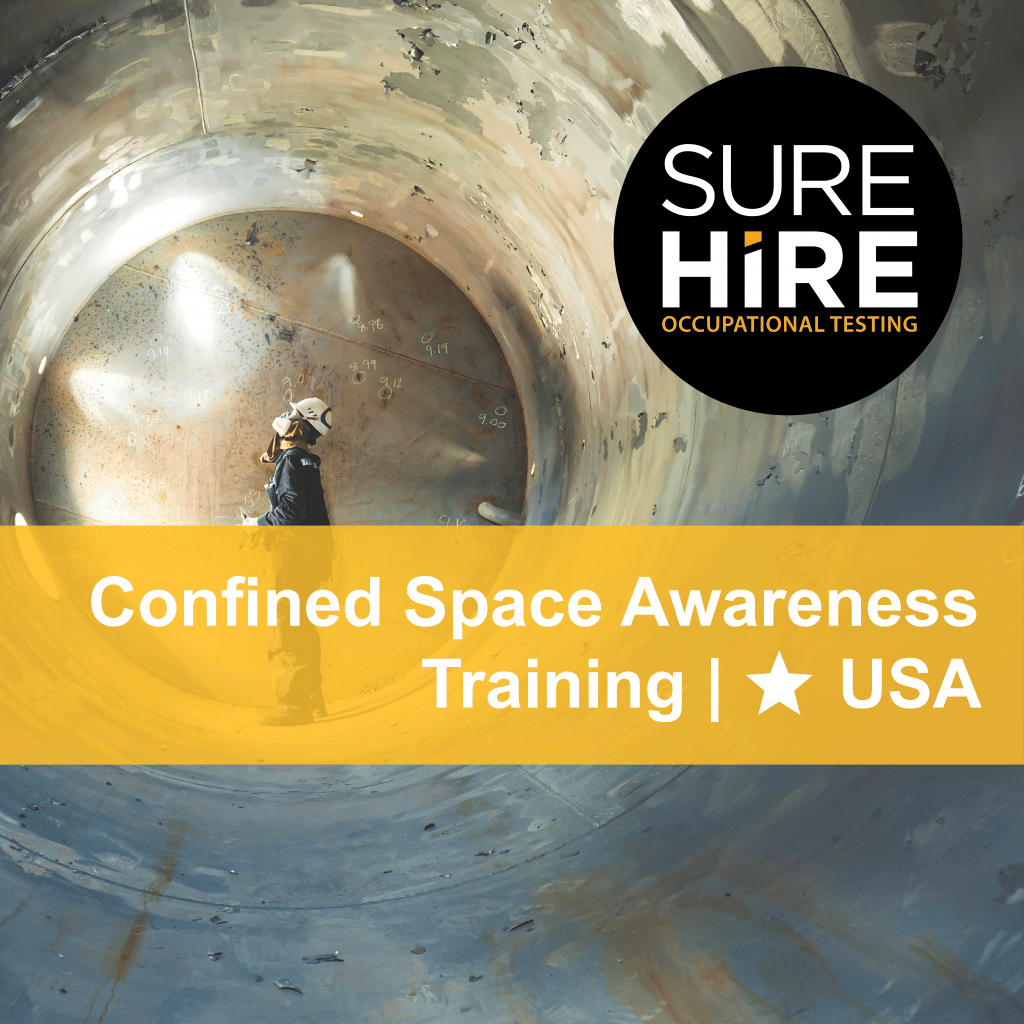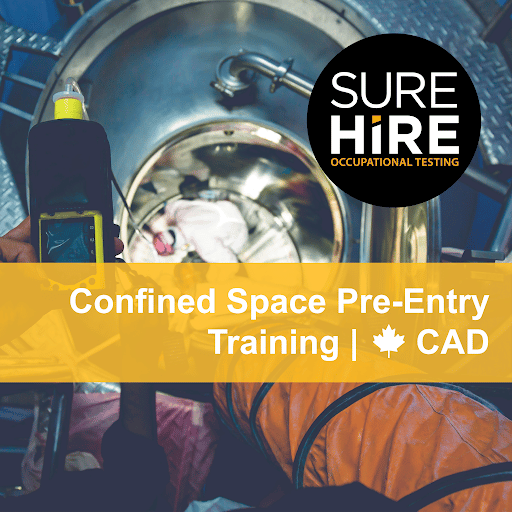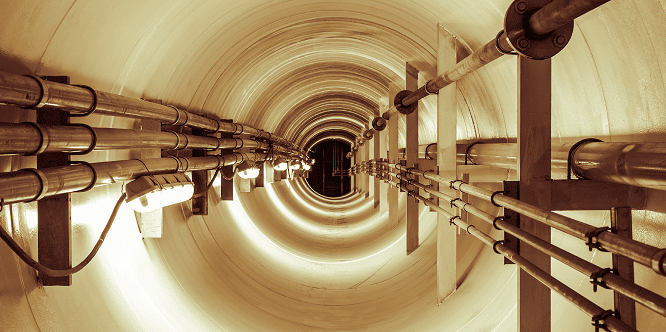TAKEAWAY: In addition to recognizing, identifying, and assessing your confined spaces and the hazards associated with them, your confined space program must include measures to control those hazards. This means you must have a plan that provides training for your workers.
Table of contents
Every year in the U.S., over 2.1 million workers enter confined spaces. It can be dangerous business. According to estimates, over 100 deaths occur in confined spaces in Canada annually. Implementing proper safety precautions could have prevented 85% of all confined space incidents, including these tragic deaths, says the Canadian Standards Association.
By law, these safety precautions must include a confined space program for your workplace. In addition to recognizing, identifying, and assessing your confined spaces and the hazards associated with them, this program must include measures to control those hazards. This means you must have a plan that provides training for your workers.
Unfortunately, in a recent U.S. study of workplace confined space fatalities, 0% used written procedures, 0% had a rescue plan, and just 15% had confined space training. Sadly, 60% of those fatalities were would-be rescuers. Most of these workers were performing routine maintenance.

NOW AVAILABLE | Confined Space Awareness/ Pre-Entry Training | iNTELLECT – by SureHire Inc.
A good health and safety program starts with educating your workforce. Our Confined Space training courses are designed in compliance with: the Canada Labour Code, Canada Occupational Health and Safety Regulations (COHSR), and the Occupational Safety and Health Administration (OSHA).
Give your workers the necessary knowledge and skills to perform their duties safely while working in a confined space. Get full course details and register online today!
What is a Confined Space?
Canada Occupational Health and Safety Regulations (COHSR) define confined space as a space that,
- is enclosed or partially enclosed;
- is not designed or intended for continuous human occupancy; and
- has a limited or restricted means of entry or exit or an internal configuration that could complicate the provision of first aid, evacuation, rescue or other emergency response
Additionally, some areas are designated as hazardous confined spaces. These are spaces that pose the risk of injury or illness to workers due to
- design, construction, location, or atmosphere;
- the materials or substances in it; or
- any other conditions relating to it.
Confined spaces can be below or above ground; despite the name, they are not necessarily small.
Despite some differences in terminology, provincial legislation largely mirrors current federal legislation concerning confined spaces. However, there are subtle differences in both terminology and expectations for employers. Specific industries also have targeted requirements regarding how they handle confined spaces. Check the occupational health and safety guidelines for each province you operate in.
Hazards in Confined Spaces
The hazards in confined spaces can lead to asphyxiation, drowning, slips and falls, crushing, or unconsciousness. Fires and explosions are also possible in some confined spaces. These hazards can be atmospheric or physical. Atmospheric hazards include toxic vapours, combustible gases, solvents or dust, and oxygen deficiency, and physical hazards include flooding, moving machinery, falling objects, electrocution, and extreme temperatures.
Common Industries Requiring Confined Space Assessments
Confined spaces can be found in almost any industry, but they are a common hazard in mining, construction, agriculture, and transportation.
Examples of confined spaces include:
- Silos
- Vats
- Hoppers
- Utility vaults
- Tanks
- Water supply towers
- Sewers
- Pipes
- Access shafts
- Truck or rail tank cars
- Aircraft wings
- Boilers
- Utility holes
- Pump stations
- Digesters
- Manure pits
- Storage bins
Even though they may be open to the air, ditches, wells, and trenches may also be considered confined spaces. Barges, shipping containers, and fish holds are other locations that may present a confined space hazard.
Understanding the Terminology
While there is tremendous overlap and general consistency in provincial and federal government legislation around confined spaces, there are some critical differences. One is the terminology used to define confined spaces.
You may, for example, see additional terms such as restricted and hazardous spaces. While Ontario defines confined spaces as potentially hazardous to workers, federal legislation and the province of Alberta provide a separate designation for confined spaces which are difficult to enter or exit and dangerous areas which are confined spaces with some potential hazard to the worker present.
Restricted spaces are generally challenging to enter and exit from and are not intended for continuous occupancy. They include attic spaces, below-ground vaults, trenches, and crawl spaces. These are considered confined spaces if there Is also a hazard present. Restricted and confined spaces are sometimes covered separately under existing provincial and federal legislation.
Confined Spaces and Employer Obligations
Employers have numerous obligations under provincial and federal OHS legislation, including the inspection and assessment of confined spaces, provision of written policies and procedures, and notification of employers.
There are also very detailed and specific requirements for education and training for confined space workers under OHS provincial and federal legislation.
Employers are obligated to provide education and training to any employee likely to enter a confined space as well as anyone involved in a rescue in a confined space. There are slight variations in the federal laws and those for each province and specific industries, but in most cases, employers must provide training that includes: proper use of personal protective equipment, written rescue procedures, maintaining contact between a person in the confined space and an attendant and how the written rescue procedure is initiated in the event of an emergency in the confined space, the limitations on the type of work that can be performed in the confined space, and the means of identifying a hazard while in a confined space.
Confined Space Training at SureHire
In addition to a suite of other safety-related courses, SureHire is now offering unique confined space training courses for Canadian and American workers.

Confined Space Awareness Training | USA
Duration:~75 minutes
This course is designed to provide workers in the USA with the specific knowledge and skills they need to work safely in confined spaces in compliance with OSHA. Topics include characteristics of a confined space (how to identify one, real-life examples of confined spaces, and key terms used in the workplace). Type of confined spaces and differences between non-permit and permit-required confined spaces. Hazard types and examples including atmospheric, engulfing, and more. OSHA compliant training components, including awareness, entry, and rescue training and the purpose and limits to each.
And More!

Confined Space Pre-Entry Training | CAD
Duration:~60 minutes
This course is designed to provide workers in Canada with the specific knowledge and skills they need to work safely in confined spaces in compliance with Canadian Legislation. Topics include Federal as well as Provincial/ Territorial definitions of confined space and hazardous confined space. how to identify a confined space, including questions to ask, and hazard identification. Hierarchy of controls and hazard elimination
And More!
You May Also Be Interested In…
- Do You Have Reasonable Suspicion?
 Employers cannot initiate reasonable suspicion testing without first going through the 5-step process. Reasonable suspicion training provides critical information about how to initiate reasonable suspicion testing, including the 5-step process and other tools that employers can use to help manage the misuse of alcohol and drugs in the workplace.
Employers cannot initiate reasonable suspicion testing without first going through the 5-step process. Reasonable suspicion training provides critical information about how to initiate reasonable suspicion testing, including the 5-step process and other tools that employers can use to help manage the misuse of alcohol and drugs in the workplace. - An Employer’s Guide: What You and Your Employees Need to Know About DOT Drug & Alcohol Testing
 When implementing or maintaining DOT Drug & Alcohol testing, there are key areas that employers should consider.
When implementing or maintaining DOT Drug & Alcohol testing, there are key areas that employers should consider. - SureHire Occupational Testing Acquires COHR Health: A Positive Step Towards Safe, Healthy, Productive Workforces and Communities
 We are thrilled to announce that today, May 6, 2024, SureHire Occupational Testing has officially acquired COHR Health, a well-known leader in occupational health services. Read on…
We are thrilled to announce that today, May 6, 2024, SureHire Occupational Testing has officially acquired COHR Health, a well-known leader in occupational health services. Read on… - Occupational Testing Use Case – Mining
 In this case study, we will explore how mining companies can use various types of occupational tests to reduce Total Recordable Incident Rates (TRIR) long term.
In this case study, we will explore how mining companies can use various types of occupational tests to reduce Total Recordable Incident Rates (TRIR) long term. - 9 Strategies to Keep Workers Cool on Drilling Sites During Hot Summer Months
 This article delves into strategies to keep workers cool and safe on drilling sites during the hot summer months.
This article delves into strategies to keep workers cool and safe on drilling sites during the hot summer months. - Hearing Conservation Basics: How to Manage Occupational Noise
 Learn how to proactively mitigate occupational noise risks and help prevent NIHL among workers.
Learn how to proactively mitigate occupational noise risks and help prevent NIHL among workers.

